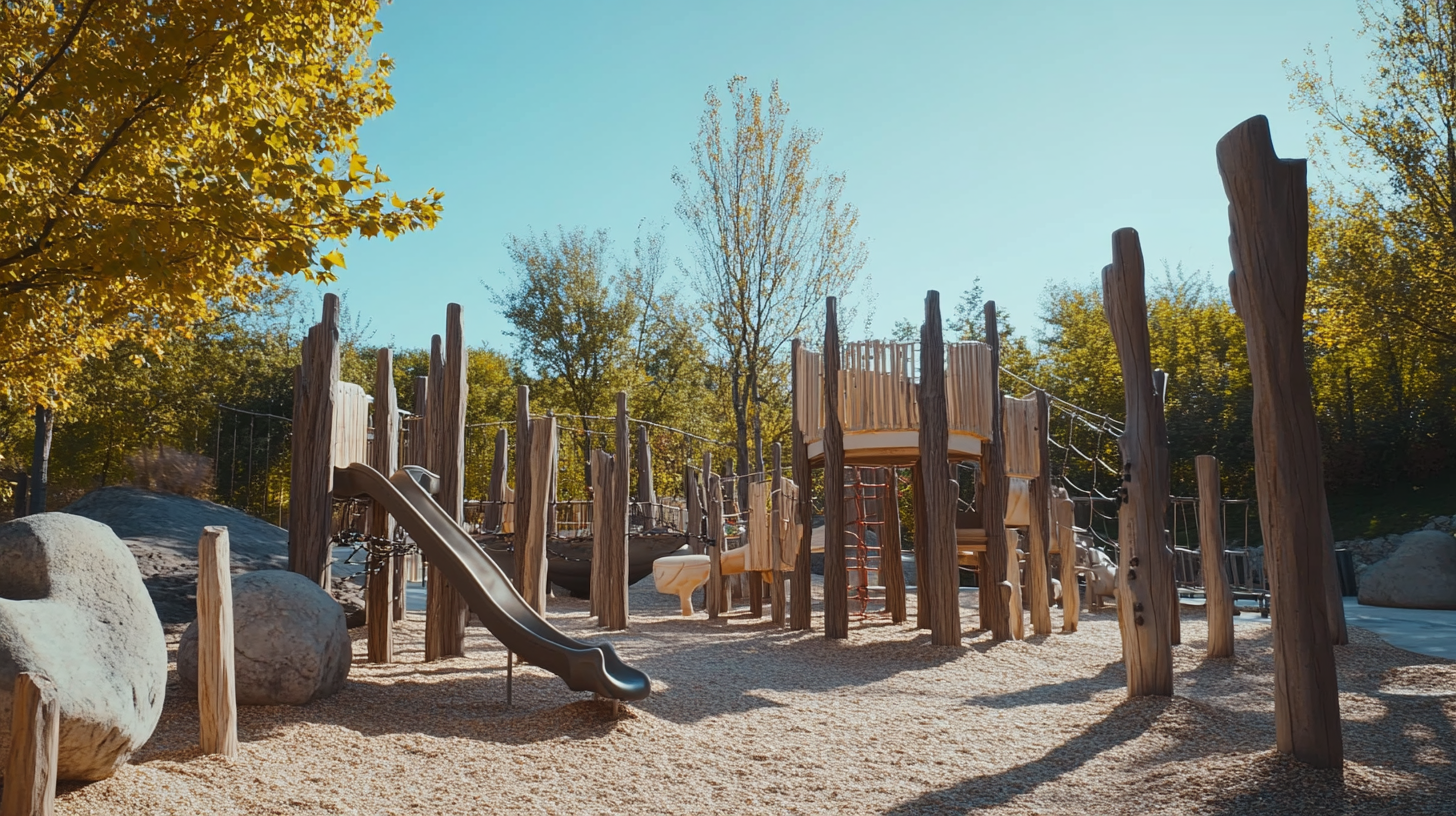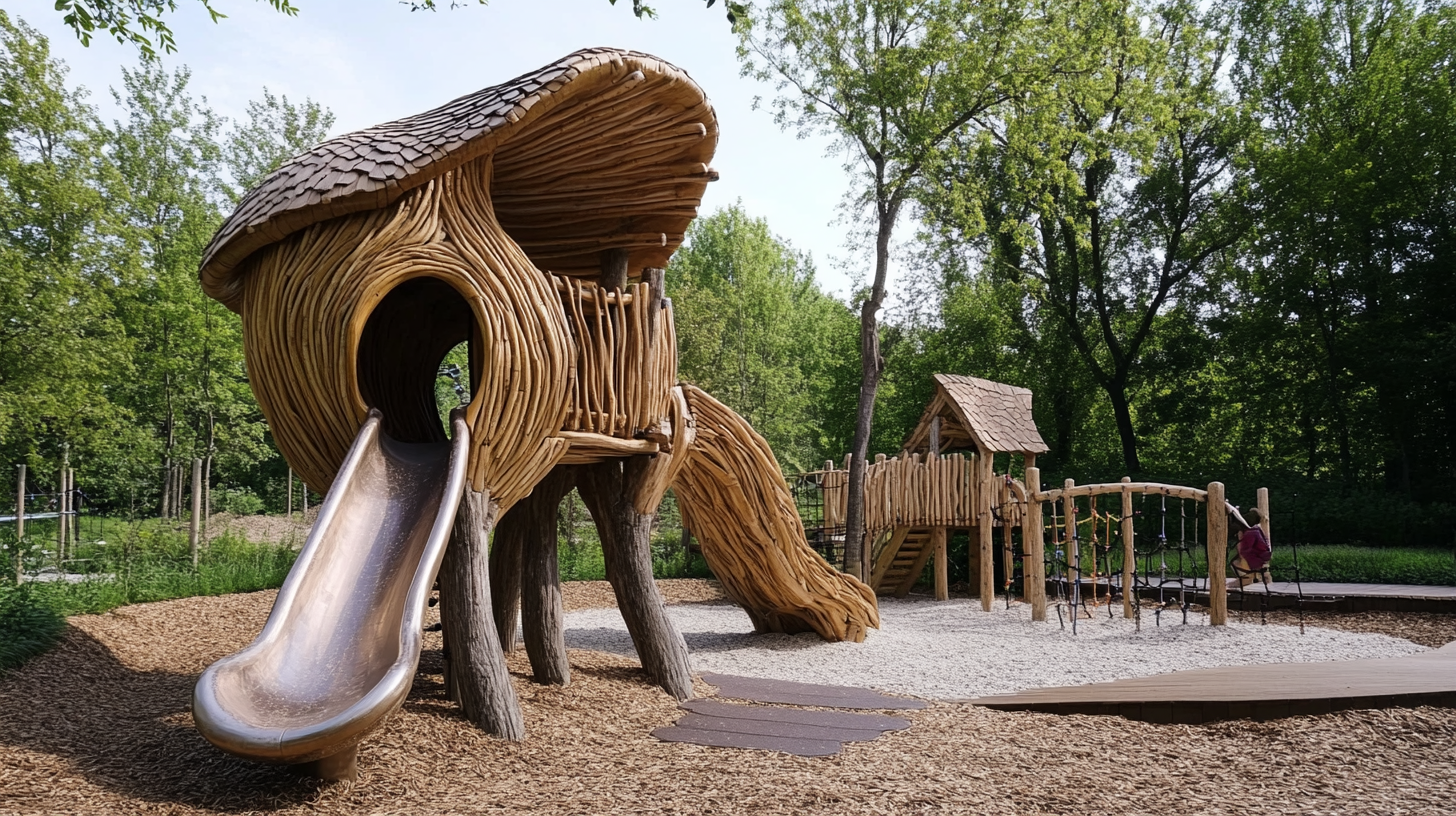The outdoor playground industry is experiencing a transformative phase, driven by a growing recognition of the importance of play in childhood development. According to a recent report by the International Play Equipment Manufacturers Association (IPEMA), the global playground equipment market is projected to reach USD 3.3 billion by 2026, expanding at a compound annual growth rate (CAGR) of 5.1%. This rapid growth highlights not only the increasing investment in outdoor play areas but also reflects a burgeoning demand for innovative and safer playground designs tailored to meet diverse needs across different regions.
In light of this evolution, the concept of "Play Ground Outdoor" has transcended traditional boundaries, embracing new materials, sustainability practices, and inclusive features that cater to children of all abilities. The National Association for the Education of Young Children (NAEYC) emphasizes that high-quality outdoor play spaces can significantly enhance physical health while fostering social skills and creativity. Therefore, it is essential for industry stakeholders to understand the emerging trends and integrate them to create engaging, safe, and adaptable outdoor playgrounds that resonate with global audiences and support the holistic growth of children in various environments.

As outdoor playgrounds evolve, various trends are shaping their future across the globe. One significant trend is the emphasis on inclusive design, ensuring that playgrounds cater to children of all abilities. This move towards inclusivity not only enriches playtime experiences but also fosters a sense of community among children and families. Manufacturers are increasingly integrating adaptive equipment, allowing children with disabilities to engage alongside their peers, promoting social interaction and enhancing developmental skills. Another trend gaining momentum is the incorporation of natural elements into playground designs. Designers are recognizing the benefits of connecting children with nature, leading to the integration of features such as natural wood structures, climbing rocks, and water features. This approach not only boosts children's creativity and imagination but also promotes physical activity and risk-taking in a safe environment. By creating spaces that mimic natural landscapes, playgrounds encourage exploration and environmental stewardship from an early age. Sustainability is also at the forefront of playground innovation. As awareness of environmental issues grows, manufacturers are prioritizing eco-friendly materials and practices. From using recycled plastics to developing energy-efficient lighting, playgrounds are becoming exemplars of sustainability. This shift not only appeals to environmentally conscious consumers but also helps instill a sense of responsibility in children, who learn the importance of protecting their planet through play.

As the global demand for outdoor playgrounds continues to grow, the integration of sustainable materials and innovative designs has become increasingly vital. Recent research indicates that the global playground equipment market is projected to reach $3.7 billion by 2026, driven largely by a focused shift towards eco-friendly construction practices. This transformation reflects a broader societal push toward sustainability, where parents and communities prioritize environmentally responsible options in children's play environments.
One key area of innovation is the use of recycled and sustainable materials in playground construction. For instance, many manufacturers are now utilizing recycled plastics and sustainable wood alternatives, significantly reducing the carbon footprint of new playground installations. A 2022 report by the International Playground Equipment Manufacturers Association highlighted that playgrounds made from recycled materials can reduce waste by up to 60%, demonstrating a significant impact on environmental conservation efforts. Furthermore, adopting these materials does not compromise safety or durability, as they can meet rigorous international safety standards while providing a fun, engaging environment for children.
Design trends also emphasize environmentally responsible practices, with an increasing focus on natural landscapes and climbing structures that integrate seamlessly into the surrounding environment. Studies show that nature-inspired playgrounds not only enhance children's engagement and physical activity but also support biodiversity in urban spaces. The U.S. Green Building Council reports that incorporating natural elements can reduce maintenance costs by up to 30%, making these playgrounds not only sustainable in practice but also economically viable long-term. This innovative approach ensures that playgrounds are rewarding for children, stimulating their imagination while promoting environmental awareness from an early age.

The evolution of outdoor playgrounds is witnessing a revolutionary wave as technology finds its way into play spaces designed for children around the globe. With an emphasis on enhancing outdoor play experiences, advancements in technology are paving the way for innovative playground designs that not only captivate children's imaginations but also promote learning and social interaction. From interactive play panels that respond to touch to augmented reality features that expand the realm of imaginative play, these innovations are transforming traditional playgrounds into dynamic environments ready to engage a digital-savvy generation.
One of the most exciting trends is the integration of smart technology. Playground equipment now includes sensors that track children's physical activities, providing real-time feedback on their play patterns. This data can be invaluable for parents and educators, helping them understand children's developmental needs and encouraging healthy outdoor activity. Moreover, technology such as mobile apps can guide children on themed treasure hunts around playgrounds, fostering cooperation and team spirit while they learn about nature, science, or local history as they play.
Another significant aspect of this technological integration is the focus on safety and accessibility. Innovations like smart materials can offer softer landings in case of falls while providing non-toxic surfaces for play. Additionally, inclusive design principles ensure that children of all abilities can enjoy the playgrounds, making it a space for everyone. By incorporating technology thoughtfully, outdoor playgrounds can create enriching environments that not only entertain but also empower children to learn, connect, and grow through play.

Designing outdoor playgrounds that cater to diverse communities requires a deep understanding of cultural considerations that influence children's play behaviors and preferences. According to a report from the International Playground Equipment Manufacturers Association, the global playground market is projected to grow at a CAGR of 3.6% from 2021 to 2028, highlighting the increasing importance of inclusive design practices.
Incorporating elements that reflect local traditions, values, and customs can significantly enhance the relevance of play spaces. For instance, in some cultures, communal play is preferred over solitary play; thus, designing playgrounds with larger interconnected play structures can foster social interactions among children. A study published in the Journal of Environmental Psychology found that children who engage in play that resonates with their cultural background exhibit higher levels of creativity and social skills, reinforcing the necessity of culturally sensitive playground designs.
Moreover, safety and accessibility must also be pivotal considerations. The Consumer Product Safety Commission (CPSC) outlines that playground safety standards are crucial, but these must be adapted to consider cultural norms and community needs. For example, in certain regions, parents may place greater emphasis on natural play environments that utilize locally-sourced materials, such as wood and stone, rather than conventional metal equipment. Ultimately, by understanding and integrating these cultural nuances, designers can create outdoor playgrounds that are not only safe and enjoyable but also celebrate the diverse identities of the children who use them.
In today’s rapidly evolving world, outdoor playgrounds are becoming hubs of innovation that encourage not just physical activity but also collaborative play. These unique play environments are being designed with features that promote social interaction and teamwork among children. By incorporating elements such as multi-user equipment, interactive digital installations, and flexible layouts, modern playgrounds are striving to provide an engaging experience that resonates with the needs of the global market.
Recent trends in technology have greatly influenced playground design. The integration of digital features—like augmented reality play experiences—can transform traditional playgrounds into immersive environments where children can engage in both physical and imaginative play. For example, concepts similar to those seen in gaming platforms, which allow collaborative exploration and interaction, can inspire the development of playgrounds that facilitate active play and community engagement. This not only sparks creativity among young users but also fosters social skills in a playful and dynamic setting.
Moreover, the collaborative aspect of play is being emphasized through designs that encourage group activities. Play structures that require teamwork, such as climbing walls or obstacle courses designed for multiple users, help children learn how to communicate and cooperate effectively. The shift towards inclusive and cooperative play experiences ensures that children from diverse backgrounds come together, sharing experiences and creating genuine social bonds. Ultimately, as the playground evolves, it reflects a deeper understanding of the role of play in child development, emphasizing shared experiences that are vital for growing minds in a connected world.
